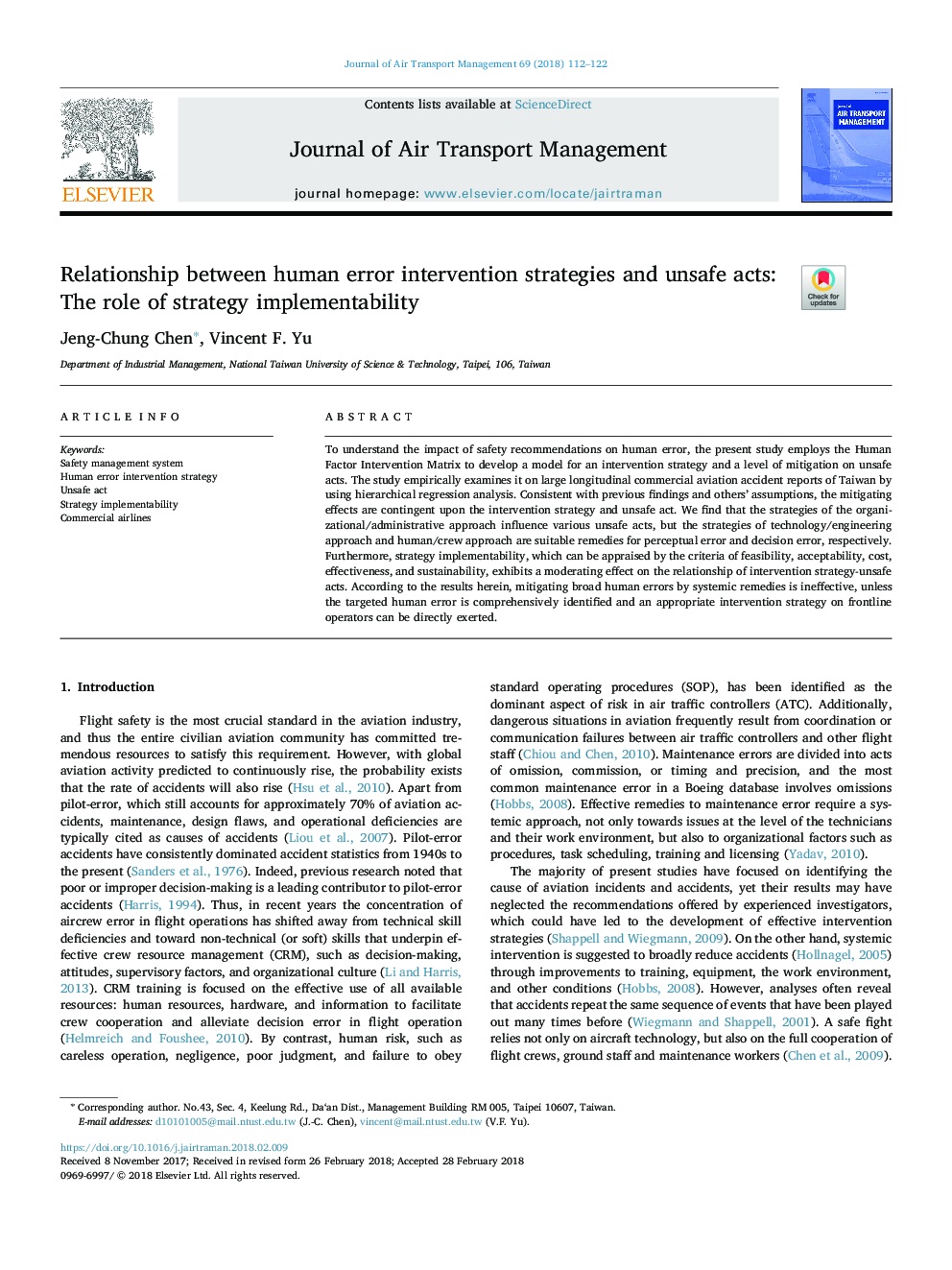| Article ID | Journal | Published Year | Pages | File Type |
|---|---|---|---|---|
| 7435145 | Journal of Air Transport Management | 2018 | 11 Pages |
Abstract
To understand the impact of safety recommendations on human error, the present study employs the Human Factor Intervention Matrix to develop a model for an intervention strategy and a level of mitigation on unsafe acts. The study empirically examines it on large longitudinal commercial aviation accident reports of Taiwan by using hierarchical regression analysis. Consistent with previous findings and others' assumptions, the mitigating effects are contingent upon the intervention strategy and unsafe act. We find that the strategies of the organizational/administrative approach influence various unsafe acts, but the strategies of technology/engineering approach and human/crew approach are suitable remedies for perceptual error and decision error, respectively. Furthermore, strategy implementability, which can be appraised by the criteria of feasibility, acceptability, cost, effectiveness, and sustainability, exhibits a moderating effect on the relationship of intervention strategy-unsafe acts. According to the results herein, mitigating broad human errors by systemic remedies is ineffective, unless the targeted human error is comprehensively identified and an appropriate intervention strategy on frontline operators can be directly exerted.
Related Topics
Social Sciences and Humanities
Business, Management and Accounting
Strategy and Management
Authors
Jeng-Chung Chen, Vincent F. Yu,
